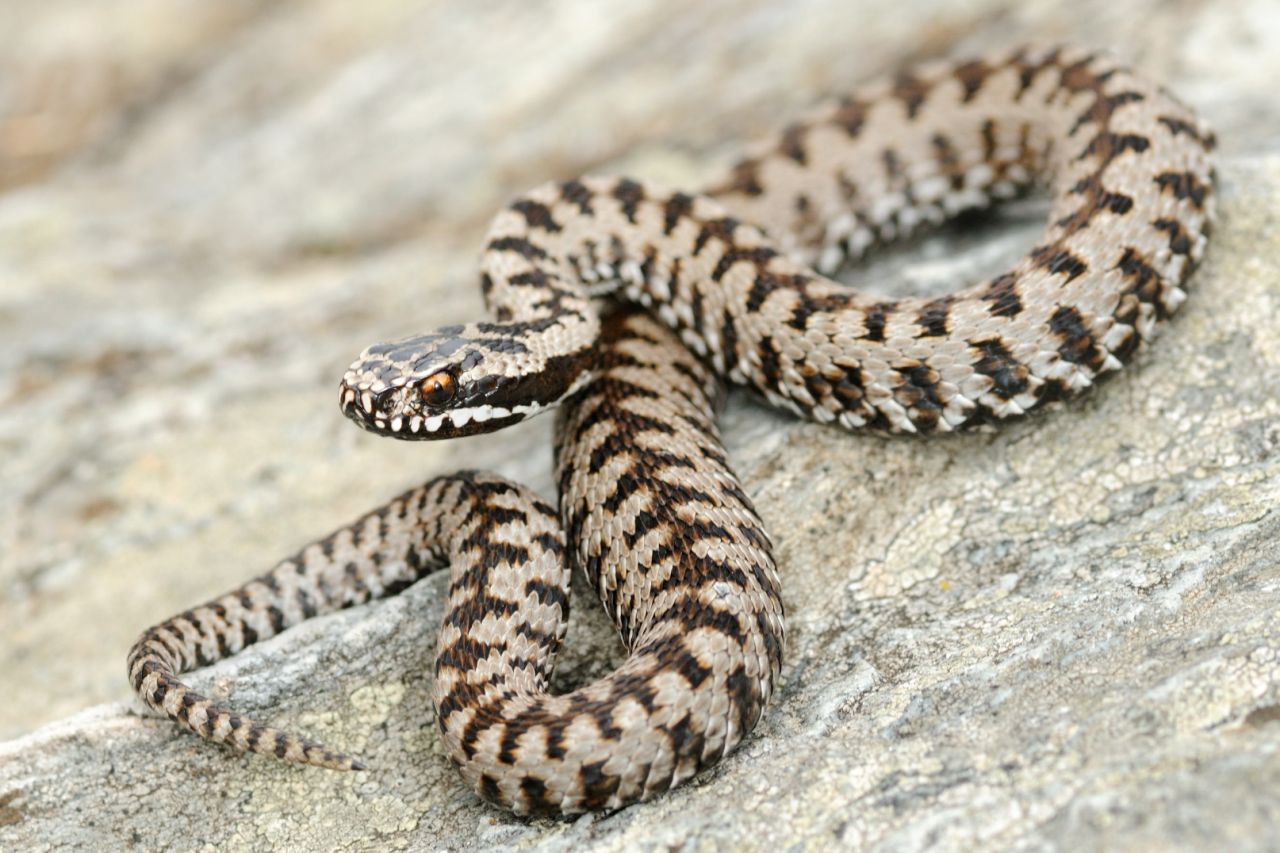Pit vipers detect heat using specialized pit organs located between the eyes and nostrils.
Many animal “sixth senses” help animals find food. For example, snakes known as pit vipers and pythons, as well as some boas, use infrared detectors called pit organs. On pit vipers these organs look like an extra pair of nostrils between the eyes and nostrils, but on pythons and most boas the pits are located on the upper lip. These specialized pit organs can “see” infrared radiation.
Every object with a temperature above absolute zero has heat. Some of the heat is emitted as infrared radiation, a type of light that cannot be seen with the naked eye. Heat receptors at the back of the pit organ detect infrared much the same way that photoreceptors (rods and cones) in your eye detect visible light. Pit organs detect temperature variations with great precision, as little as 0.0054°F (0.003°C).
Pit vipers often hunt at night, waiting for warm-blooded prey to pass by. Since animals give off infrared light, the snake can “see” with its pit organs, even in the dark. While pit organs are useful in today’s fallen world, they were not needed for this purpose before the Fall. Perhaps the vipers’ sixth sense aided in locating ripe fruit in the dark, though this is conjecture. (Ripe fruit emits infrared radiation up to a degree hotter than the surrounding plants, and rotten fruit is even hotter.)
Another possibility is that pit vipers used their pit organs to find warm resting spots, where they could absorb heat. Since they are cold-blooded, they cannot generate their own body heat through metabolism.
Since snakes no longer consume warm fruit, they need help from several senses to distinguish food from warm but inedible objects. Pit vipers don’t want to bite warm rocks! Amazingly, they can ignore background infrared radiation (from rocks and other inedible sources). This is partly due to a skill called adaptation, the ability to ignore certain unchanging stimuli. Your skin relies upon this skill as well. Your brain is not always conscious of the clothes touching your body unless something changes significantly in the texture, pressure, or weight. Similarly, the pit viper is alerted by movement and contrasting temperatures. When a warm-blooded mouse wanders by, it sticks out like a sore thumb against the cooler background.
Distinguishing heat sources is a bit difficult, so many pit vipers prefer to find a cooler place to sit and wait for dinner to come by. This explains why they often hunt at night, when it is cooler and the prey’s warm body stands out more sharply.
These bonus senses might sound like science fiction, but Hashem has designed the animal kingdom to exhibit these wonders abundantly every day.


This is consistent with the thin pit membrane, which would allow incoming IR radiation to quickly and precisely warm a given ion channel and trigger a nerve impulse, as well as the vascularization of the pit membrane in order to rapidly cool the ion channel back to its original temperature state. While the molecular precursors of this mechanism are found in other snakes, the protein is both expressed to a much lower degree and is much less sensitive to heat.